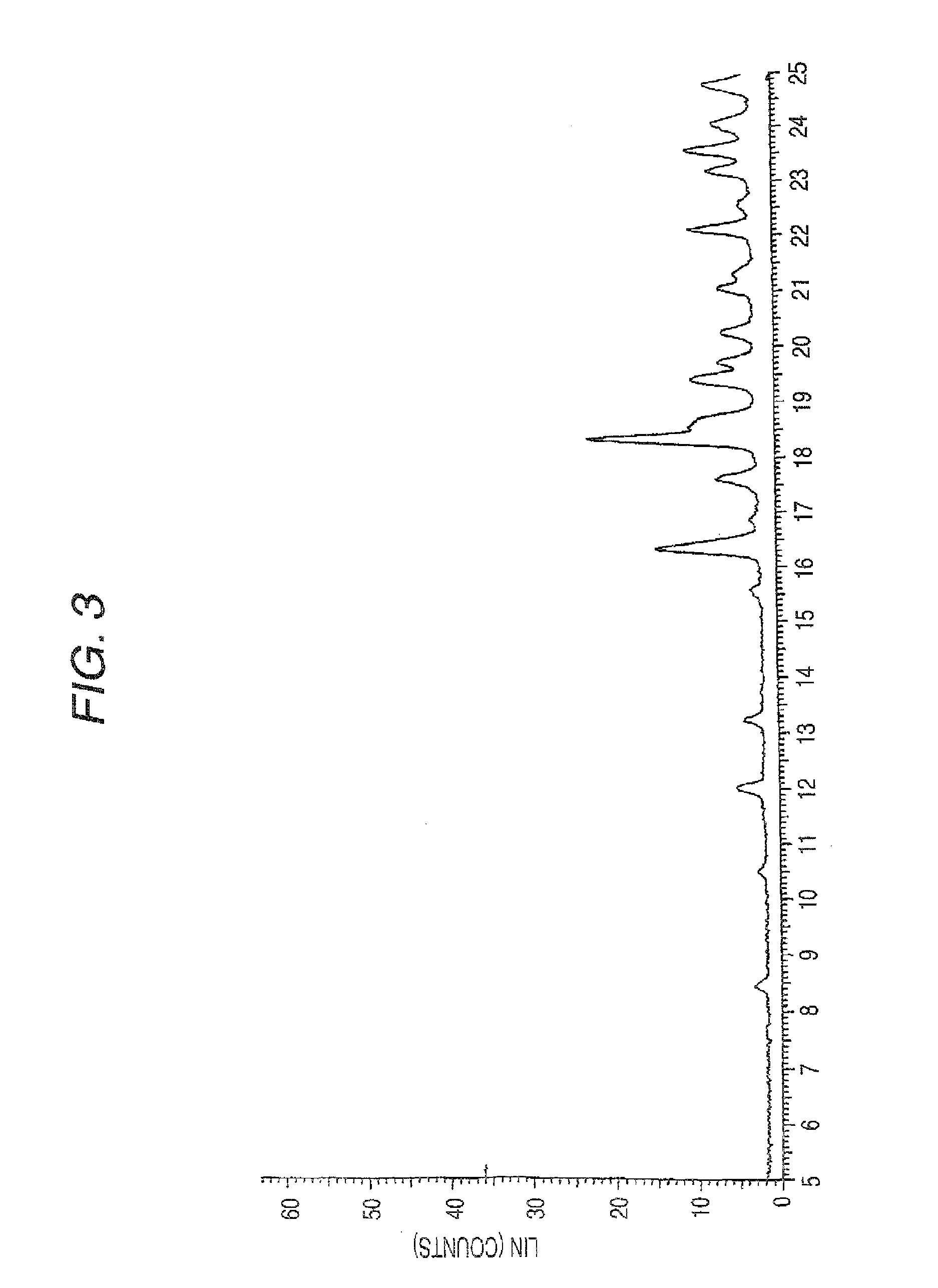Aminocarboxylic acid derivative and medicinal use thereof
a technology of aminocarboxylic acid and derivative, which is applied in the field of aminocarboxylic acid derivative, can solve the problems of insufficient lasting effect of many existing immunosuppressants and severe side effects at a considerable frequency, and achieve the effect of preventing and/or sufficient long-lasting
- Summary
- Abstract
- Description
- Claims
- Application Information
AI Technical Summary
Benefits of technology
Problems solved by technology
Method used
Image
Examples
example 1
6-(benzyloxy)-3,4-dihydronaphthalene-1(2H)-one
[0397]To a solution of 6-hydroxy-3,4-dihydronaphthalen-1(2H)-one (24.3 g) in acetone (160 mL), benzyl bromide (29.4 mL) and potassium carbonate (31.1 g) were added at room temperature, followed by stirring at 40° C. for 3.5 hours. After filtering off the insoluble matters and concentrating the filtrate, the resultant was washed with a mixed solvent of tert-butyl methyl ether-hexane (1:4), to thereby obtain the title compound (34.5 g) having the following physical properties. TLC: Rf 0.38 (hexane:ethyl acetate=3:1)
example 2
7-(benzyloxy)-4-methyl-1,2-dihydronaphthalene
[0398]To a solution of the compound (34.5 g) prepared in Example 1 in tetrahydrofuran (300 mL), methylmagnesiumbromide (3 mol / L diethyl ether solution, 55 mL) was added at 0° C., followed stirring at room temperature for 1 hours. The reaction mixture was cooled to 0° C. and poured into ice-saturated aqueous ammonium chloride solution. After adding 2 mol / L hydrochloric acid, the mixture was stirred at room temperature for 3 hours. Then, the resultant was extracted with ethyl acetate and the organic layer was successively washed with water and a brine, dried and concentrated. The obtained residue was purified by silica gel column chromatography (hexane:ethyl acetate=10:1), to thereby obtain the title compound (24.8 g) having the following physical properties.
[0399]TLC: Rf 0.57 (hexane:ethyl acetate=15:1)
example 3
6-(benzyloxy)-1-methyl-3,4-dihydronaphthalene-2-carbaldehyde
[0400]To phosphorus oxychloride (26.7 g), N,N-dimethylformamide (60 mL) was dropped at 0° C., followed by stirring for 20 minutes. Then, a solution of the compound (24.8 g) prepared in Example 2 in methylene chloride (60 mL) was slowly dropped thereto, followed by stirring at room temperature for 90 minutes. The reaction mixture was cooled to 0° C., poured into ice and then allowed to stand for a while. Next, the resultant was extracted with a mixed solvent of hexane-ethyl acetate (1:2). The organic layer was successively washed with water and a brine, dried and concentrated. The obtained solid was washed with tert-butyl methyl ether, to thereby obtain the title compound (19.9 g) having the following physical properties.
[0401]TLC: Rf 0.50 (hexane:ethyl acetate=3:1)
PUM
| Property | Measurement | Unit |
|---|---|---|
| concentrations | aaaaa | aaaaa |
| pH | aaaaa | aaaaa |
| pH | aaaaa | aaaaa |
Abstract
Description
Claims
Application Information
 Login to View More
Login to View More - R&D
- Intellectual Property
- Life Sciences
- Materials
- Tech Scout
- Unparalleled Data Quality
- Higher Quality Content
- 60% Fewer Hallucinations
Browse by: Latest US Patents, China's latest patents, Technical Efficacy Thesaurus, Application Domain, Technology Topic, Popular Technical Reports.
© 2025 PatSnap. All rights reserved.Legal|Privacy policy|Modern Slavery Act Transparency Statement|Sitemap|About US| Contact US: help@patsnap.com



